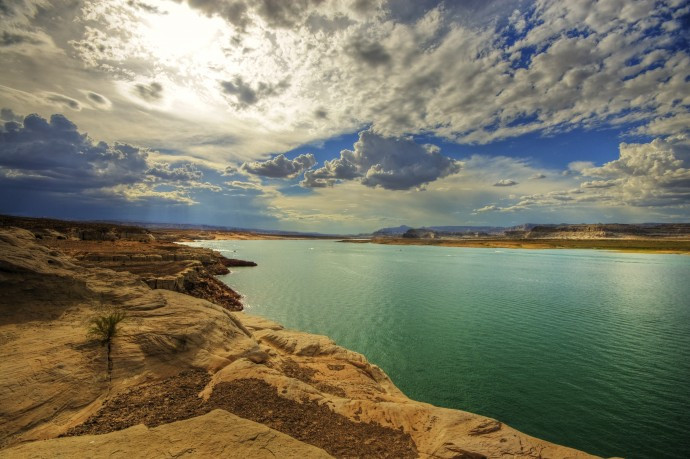Scary drought islands popping up in Lake Powell on the border between Utah and Arizona

A chilling series of land forms are beginning to emerge within the shores of massive Lake Powell on the border of Utah and Arizona, giving environmentalists, farmers and urban administrators nightmares.
The second largest reservoir in the US is so impacted by a record drought in the south west that islands are beginning to appear for the first time in nearly half a century when the lake was formed by construction of the Glen Canyon Dam.
The relentless drought is also starkly apparent in the whitish "bathtub ring" around the massive lake's 1,900-foot shore that now soars some 100 feet above boaters.
"There are parts of the lake that have pretty much become mud flats," aquatic biologist and nearby resident Erin Janicki tells the Guardian. "The inlets get silted up. It takes longer to jet around the lake because some of the waterways aren't open and you have to go around obstacles. There's still a lot of water out there, but there's been a big change. People hit rock islands all the time."
The lake is at only 45% of capacity, a troubling situation for the 40 million people in seven states who rely on it for water. The lake and the Colorado River which feeds into it serve Wyoming ranches, Arizona boom towns and agriculture, and Las Vegas and other cities throughout the region. It even helps quench the thirst of southern California through a complex system of water provisioning that also involves Lake Mead, a sister reservoir.
There's even less hope in Lake Mead, the nation's largest reservoir, which has sunk 150 feet in 14 years. It's at 37% capacity. Federal analysts predict the lake will hit a marker by 2017 that will mandate massive water cuts to Arizona and Nevada. Arizona's allocation of Colorado River water could be slashed up to 11.4%, the amount typically used by 600,000 homes.
Some regional managers are still keeping their fingers crossed, looking at the sky. But scientists are more realistic.
"To simply turn your head and say it's not going to affect us is insanity," says Pat Mulroy, senior fellow with the American Brooking Institute.
To see both Lake Mead and Lake Powell "going down to quarter capacity is a pretty scary proposition," she notes. "The loss of water in that reservoir system has been enormous. Go look at the bathtub rings, they're scary."
© Copyright IBTimes 2025. All rights reserved.






















